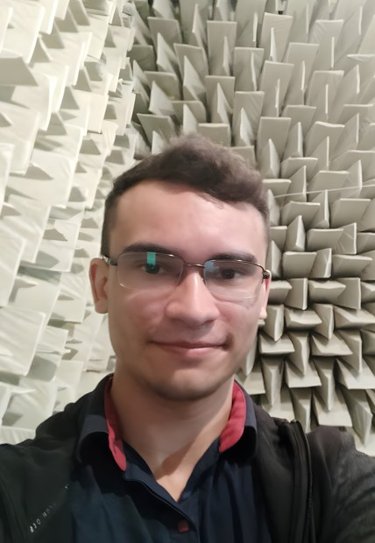Time-Domain Magnetic-Field Measurements Below 30 MHz - From Hours to Mere Minutes
Denys Pokotilov is a PhD student in the Department of Power Electronics. (Co)Promotors are prof.dr.ir. F.B.J. Leferink, dr. R.A. Vogt-Ardatjew and dr. T.H.F. Hartman from the Faculty of Electrical Engineering, Mathematics and Computer Science and prof.dr.ir. R. Smolenski from the University of Zielona Gora, Poland.
 Before electronic devices can enter global markets, they must comply with specific EMC standards. However, conventional measurement methods can take hours or even days to complete a full EUT evaluation. To address this challenge, testing standards often limit the number of measurement positions or evaluate EUT performance under static conditions, which may not reflect real-world operational behavior.
Before electronic devices can enter global markets, they must comply with specific EMC standards. However, conventional measurement methods can take hours or even days to complete a full EUT evaluation. To address this challenge, testing standards often limit the number of measurement positions or evaluate EUT performance under static conditions, which may not reflect real-world operational behavior.
This thesis examines two measurement standards: NRE01 (covering 30 Hz to 100 kHz) and CISPR 36 (covering 150 kHz to 30 MHz). A key improvement investigated in this work is the use of TD measurement, which simultaneously captures all frequency components and processes them using an FFT. This technique significantly enhances time-varying emission analysis, such as emissions from EV acceleration and deceleration, which traditional FD methods cannot adequately capture.
For CISPR 36, the study introduces a novel MSLA design composed of three orthogonal SLA nested together, enabling measurement of all necessary orientations from a single position. However, due to the close proximity of antennas, MC occurs. A correction factor was developed to compensate for amplitude and phase shifts caused by MC, ensuring accurate measurements. A multichannel receiver with at least three input channels was also investigated to support simultaneous data acquisition, reducing measurement time from hours or days to just minutes.
For NRE01, improvements focused on real-time visual feedback and efficient scanning techniques. By leveraging TD measurement with fast data processing, measurement time per antenna position was reduced from one minute to 0.15 s. This enabled continuous antenna movement, significantly reducing testing duration. To mitigate the risk of missing high MF areas, various scanning techniques, including random movement, uniform motion, and advanced antenna tracking, were tested. The proposed tracking system integrates 2D camera-based tracking and 3D augmented reality tracking, facilitating real-time MF mapping and assisting test operators in focusing on critical areas.
This research advances EMC measurement methodologies by introducing efficient techniques without compromising accuracy. The proposed enhancements for CISPR 36 and NRE01 enable comprehensive evaluations across different operational modes while significantly reducing testing time. These innovations improve measurement efficiency both in laboratory settings and real-world conditions, ensuring compliance with EMC standards.
